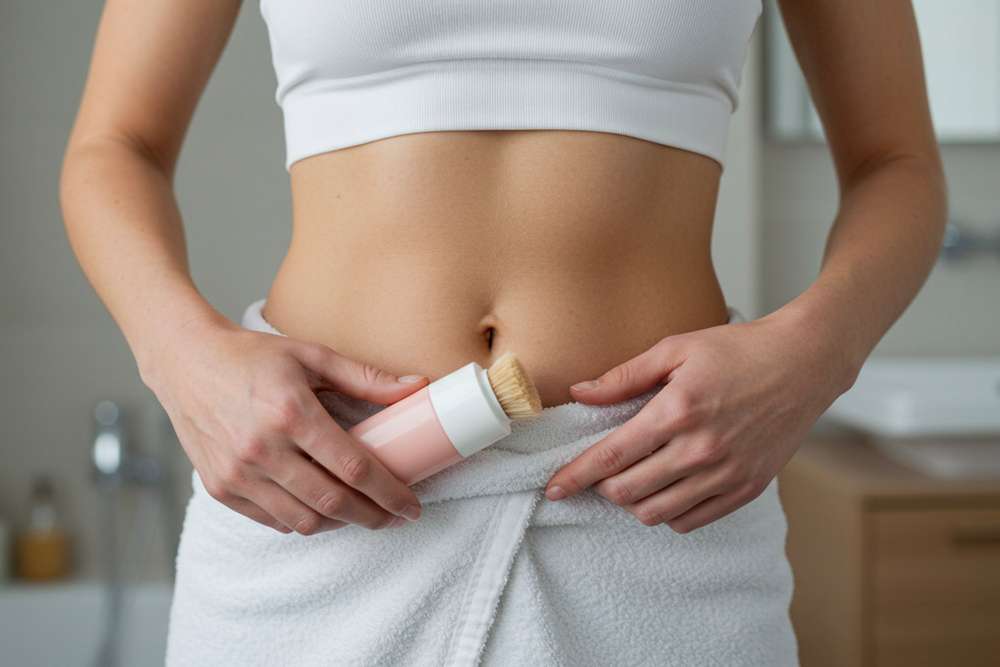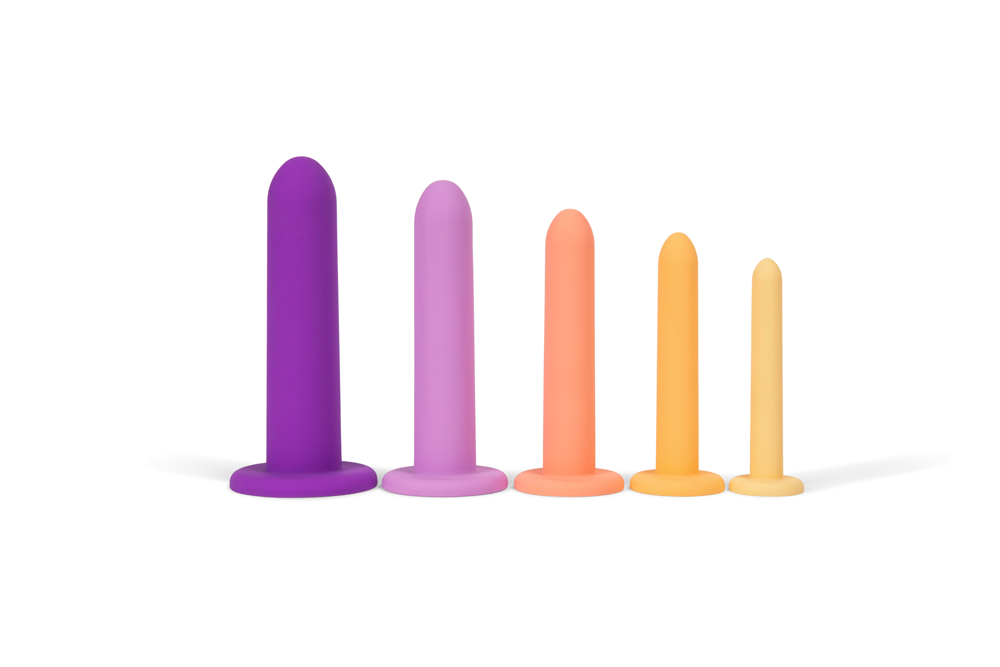Living with chronic pelvic pain, frequent urination, or a persistent sensation of bladder discomfort can feel isolating and overwhelming. If you’ve been searching for answers about these symptoms, understanding interstitial cystitis (IC), also known as bladder pain syndrome (BPS), might provide clarity.
This blog post explains what interstitial cystitis really is, exploring its symptoms, potential causes, and various treatment options.
What Is Interstitial Cystitis?
Interstitial cystitis, often referred to as painful bladder syndrome, is a chronic condition characterized by recurring pain or pressure in the bladder and pelvis.
Unlike typical cystitis, which is usually caused by an infection, interstitial cystitis does not have a bacterial origin and does not respond to conventional antibiotic treatments. Instead, it involves persistent inflammation in the lining of the bladder that leads to a range of symptoms, from mild discomfort to debilitating pain.
Symptoms and Diagnosis
The symptoms of interstitial cystitis/bladder pain syndrome (IC/PBS) are classically characterized by pain, especially with bladder filling after consuming foods containing bladder irritants, urinary urgency, frequency and nocturia (getting up at night to urinate); sometimes this can be a pressure like sensation instead of, or in addition to, pain. Addtionally, those diagnosed with IC/BPS often experience pain with intercourse along with more generalized pelvic, abdominal, hip and low back pain. For some individuals, these symptoms may flare and subside, while others experience them more consistently. Since IC/BPS shares symptoms with other conditions such as endometriosis, urinary tract infections (UTIs) or overactive bladder, an accurate diagnosis often requires a thorough evaluation by a healthcare provider.
Who Is Affected by Interstitial Cystitis?
While interstitial cystitis can affect anyone, it is more common in women than men. Studies estimate that about 3-8 million women and 1-4 million men in the United States alone may have interstitial cystitis/bladder pain syndrome. The condition often appears between the ages of 30 and 40, though it can occur at any age.
Interstitial cystitis/bladder pain syndrome can significantly impact the quality of life in individuals who suffer from it. Many individuals experience disruptions in sleep, work, relationships, and overall well-being due to the relentless symptoms. However, with proper management and support, many people find relief.
What Causes Interstitial Cystitis?
The exact cause of interstitial cystitis/bladder pain syndrome remains unclear, but researchers believe it may result from a combination of factors and have developed subtypes. Damage to the bladder lining could make the bladder more susceptible to irritation from urine, while an overactive immune system may suggest a possible link to autoimmune responses.
Additionally, heightened nerve activity in the bladder and pelvic region might amplify pain signals, and chronic inflammation may contribute to tissue damage and persistent discomfort. While the root cause of interstitial cystitis varies among individuals, these factors offer a foundation for understanding the complexity of the condition.
How Is Interstitial Cystitis Diagnosed?
The diagnosis of interstitial cystitis/bladder pain syndrome has evloved over the years; starting out as a condition involving damage, or the presence of Hunner’s lesions in the bladder lining and is now often diagnosed based on symptoms. However, the symptoms overlap with other conditions and patients may stil lbe given this diagnosis without any evidence of damage to the bladder lining.
Diagnosing interstitial cystitis involves ruling out other potential causes of symptoms, such as urinary tract infections (UTIs), bladder stones, or gynecological conditions. Healthcare providers may use various diagnostic tools, including a review of the patient's medical history and a symptom diary to track patterns of frequency, urgency, and pain.
Urinalysis and urine culture are often performed to exclude infections, and a cystoscopy may be conducted to examine the bladder lining and identify any abnormalities. An accurate diagnosis is essential for creating an effective treatment plan, as managing interstitial cystitis typically requires a multifaceted approach to care.
The American Urological Association (AUA) has developed guidelines which are updated periodically. Currently, cystoscopy is not required in the majority of cases.
Treatment Options for Interstitial Cystitis
Managing interstitial cystitis/bladder pain syndrome involves addressing symptoms and improving quality of life. While there’s no one-size-fits-all solution, below are some common treatment options. The AUA recommends a variety of treatments based on the suspected type of interstitial cystitis/bladder pain syndrome: bladder centric (Hunner’s lesions), pelvic floor centric, or in those with other conditions such as IBS, migraines, fibromyalgia, etc also known as Chronic Overlapping Pain Conditions. The following types of treatments recommended for this condition are listed below.
Dietary Changes
Many people find relief by avoiding foods that irritate the bladder, such as caffeine, alcohol, citrus fruits, and spicy foods. While this may be frustrating for your social life, its a relatively low risk intervention that has helped many individuals reduce their symptoms.
Bladder Training
Gradually increasing the time between bathroom visits can help reduce frequency and urgency.
Physical Therapy
Pelvic floor dysfunction often accompanies IC, and specialized physical therapy can relax and strengthen the muscles. This is one of the first-line therapies recommended as the majority of individuals diagnosed with IC/BPS have pelvic floor dysfunction, which may ultimately be the cause of their symptoms. Pelvic floor PT for this population should be focused on high-tone or tight pelvic floor muscles and should include both manual therapy techniques and exercises focused on relaxing the pelvic floor muscles. Additional interventions including mindfulness and bladder retraining may be used in conjunction.
Medications
These can range from oral medications to bladder instillations aimed at reducing inflammation and pain.
Holistic Tools
Complementary therapies, such as acupuncture and mindfulness, can also provide relief.
Bladder directed therapies
Bladder instillations, which can include variations of medications, are injected into the bladder during an office procedure to reduce inflammation of the bladder lining. These are primarily used in cases where Hunner’s lesions are present.
Living with Interstitial Cystitis: Practical Tips for Everyday Life
Living with interstitial cystitis can feel overwhelming, but practical strategies can help alleviate symptoms and improve your overall quality of life. Combining medical advice with personal management techniques often yields the best results. Here are some actionable tips for navigating daily life with interstitial cystitis.
Lifestyle Adjustments to Support Bladder Health
Bladder-Friendly Diet
Dietary changes can play a significant role in managing IC symptoms. Certain foods and beverages, known as bladder irritants, may exacerbate pain or urgency. Common triggers include caffeine (coffee, tea, energy drinks), carbonated beverages, citrus fruits, alcohol, and spicy or acidic foods.
Creating a food journal can help identify personal triggers. By tracking your meals and correlating them with symptom flare-ups, you can develop a diet tailored to your needs. Over time, eliminating irritants and focusing on nutrient-dense, non-irritating options can make a noticeable difference.
Stay Hydrated
While frequent urination may make you hesitant to drink water, staying hydrated is important. Concentrated urine can irritate the bladder further. Sipping water consistently throughout the day helps dilute urine and minimize discomfort.
Gentle Exercise
While intense workouts can sometimes worsen symptoms, low-impact activities like yoga, swimming, or walking can reduce stress and promote relaxation. Additionally, exercises that strengthen the pelvic floor can provide support for bladder function. Always consult a healthcare provider or physical therapist before starting a new exercise routine.
Coping with Flares: What to Do When Symptoms Spike
Flares, or sudden worsening of symptoms, are common with interstitial cystitis. Learning to manage these episodes can make them less daunting.
Apply Heat or Cold
Using a heating pad on the lower abdomen can provide soothing relief during flares. Alternatively, some individuals find cold packs more effective. Experiment to determine which works best for you.
Practice Relaxation Techniques
Stress can worsen interstitial cystitis symptoms, so finding ways to manage tension is essential. Mindfulness, deep breathing exercises, and progressive muscle relaxation can help calm the nervous system.
Engage in Gentle Stretching
Certain stretches, particularly those focused on the hips and lower back, can alleviate pelvic tension. Consider incorporating poses like child’s pose, seated forward bends, or happy baby pose into your routine.
Seeking Emotional Support
Dealing with a chronic condition like interstitial cystitis can take a toll on mental health. Feelings of frustration, sadness, or isolation are common, but support is available.
Join Support Groups
Connecting with others who understand what you’re going through can provide comfort and practical advice. Many interstitial cystitis-specific support groups exist online and in person, offering a safe space to share experiences.
Communicate with Loved Ones
Helping friends and family understand your condition can foster empathy and reduce misunderstandings. Sharing educational resources about interstitial cystitis may be helpful.
Consider Professional Counseling
A therapist experienced in chronic illness can help you navigate the emotional challenges of living with interstitial cystitis. They can provide coping strategies tailored to your unique situation.
The Role of Physical Therapy in Interstitial Cystitis Management
Physical therapy is a cornerstone of care for individuals living with interstitial cystitis, especially when pelvic floor dysfunction is involved. The connection between interstitial cystitis and the pelvic floor lies in the body’s natural response to pain.
Chronic discomfort in the bladder region can lead to overactivation and tension in the surrounding pelvic muscles, creating a cycle of pain and dysfunction. A trained pelvic health physical therapist can help break this cycle by addressing the underlying issues contributing to symptoms.
Understanding Pelvic Floor Dysfunction in Interstitial Cystitis
The pelvic floor consists of muscles, ligaments, and connective tissue that support the bladder, uterus, and rectum. These muscles also play a role in controlling urination and bowel movements.
In people with interstitial cystitis, the pelvic floor often becomes hypertonic (overactive), meaning the muscles are excessively tight. Pelvic floor dysfunction may occur as a result of interstitial cystitis/bladder pain syndrome or it may be the cause of the symptoms. This tightness can exacerbate the sensation of bladder urgency or frequency, and cause referred pain to nearby areas, such as the lower back or thighs.
In some cases, pelvic floor dysfunction may even mimic interstitial cystitis symptoms, making it challenging to distinguish the primary cause of discomfort. Regardless of whether pelvic floor dysfunction is a primary issue or secondary to interstitial cystitis, addressing it can significantly improve quality of life.
Benefits of Physical Therapy for Interstitial Cystitis
The benefits of pelvic health physical therapy extend beyond muscle relaxation and pain reduction. Many patients report improvements in their overall quality of life, including:
- Reduced Urgency and Frequency: By addressing tension in the pelvic floor, physical therapy can help normalize bladder signals, reducing the sensation of needing to urinate constantly.
- Improved Sleep: With fewer nocturnal bathroom trips, many individuals experience better rest and recovery.
- Enhanced Sexual Function: Alleviating muscle tension can lead to less pain and improved comfort during intercourse, an issue commonly reported by individuals with interstitial cystitis painful bladder syndrome.
- Increased Confidence: Feeling more in control of your symptoms can help you regain independence and engage more fully in daily activities.
Taking the First Step
Pelvic health physical therapy can be a transformative experience for those living with interstitial cystitis, offering symptom relief and a greater understanding of how the pelvic floor functions. If you suspect pelvic floor dysfunction is contributing to your discomfort, consult a trained pelvic health physical therapist to explore how this specialized care can enhance your treatment plan.
The Importance of Personalized Care
Because interstitial cystitis symptoms and triggers vary widely, personalized care is essential. What works for one person may not work for another, so collaborating with healthcare professionals is essential.
A tailored approach to managing interstitial cystitis may include medications to reduce pain or inflammation, dietary counseling to identify and avoid bladder irritants, and behavioral therapies to manage stress and improve sleep quality. This individualized strategy helps address the unique needs of each person, promoting more effective symptom relief and overall well-being.
Hope for the Future: Advances in Interstitial Cystitis Research
Ongoing research into interstitial cystitis continues to shed light on its causes and potential treatments. From exploring genetic predispositions to developing new therapies, the future holds promise for those living with interstitial cystitis.
Emerging areas of interest in interstitial cystitis research include the role of gut and bladder microbiomes in the development and progression of the condition, as well as advances in nerve-targeting pain relief methods that aim to reduce discomfort more effectively.
Additionally, innovations in regenerative bladder therapies are being explored, offering potential new treatment options to repair and restore bladder function. These advancements hold promise for improving the understanding and management of interstitial cystitis in the future.
Staying informed about these developments can provide hope and empower you to explore new options with your healthcare team.
How NewFlora Supports Bladder Health
At NewFlora, we understand the challenges faced by those with interstitial cystitis and offer tailored products designed to support pelvic health. Our pelvic wand is designed to assist in pelvic muscle relaxation, which can be particularly beneficial if you or a loved one is experiencing pelvic floor dysfunction as part of interstitial cystitis symptoms.
Similarly, the vibrating pelvic wand provides gentle vibrations that help soothe the discomfort associated with a tense pelvic floor. Additionally, our 5 piece dilator set can assist in gradually stretching the pelvic muscles, which may alleviate some of the pains caused by interstitial cystitis.
You Are Not Alone: Finding Relief and Reclaiming Your Life
Living with interstitial cystitis can feel overwhelming, but you don’t have to face it alone. By understanding the condition, exploring personalized treatment options, and leveraging products from NewFlora, you can take meaningful steps toward relief.
To learn more about managing interstitial cystitis or if you need support in finding the right tools, we’re here to help. Contact us today and take the first step toward reclaiming your well-being.





